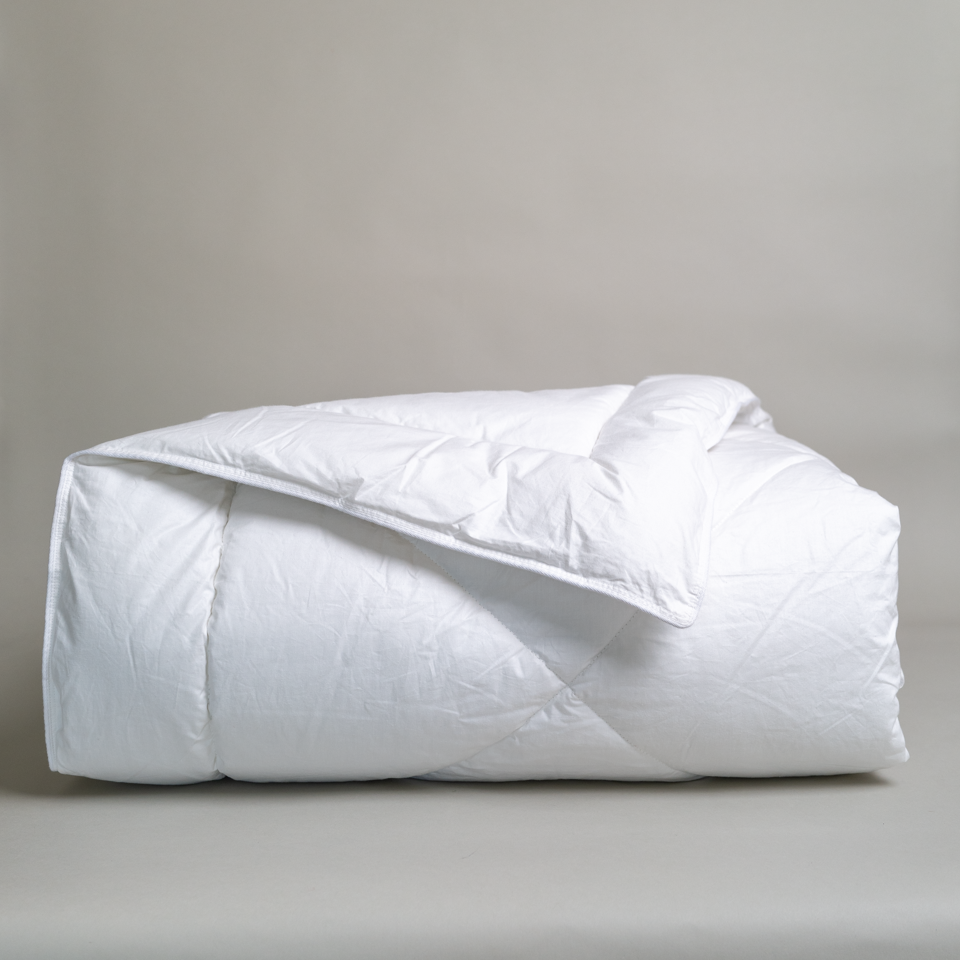How Do I Wash, Dry, and Care for My Cashmere?
We Have Some Answers to Your Cashmere Care Questions
When the temperature drops, it’s time to get cozy, and nothing says winter-cozy like cashmere. Whether it’s woven into a hat, a wrap, or a blanket, cashmere provides a soft and sumptuous warmth without weighing you down. The quality and price of cashmere pieces can vary greatly. The most expensive are made with long, fine fibers from the undercoats of Mongolian cashmere goats. This is what Down Etc uses in its cashmere products. Once you have invested in a cashmere piece, you’ll want to care for it properly so you can enjoy it for years to come. Following are some of the ways we maintain our Down Etc cashmere pieces.
1. How Often Should I Wash My Cashmere?
It’s not necessary to wash your cashmere after every wear. Down Etc recommends washing your cashmere when it stops feeling and smelling fresh. However, always be sure to wash and thoroughly dry your cashmere before storing it.
2. How Should I Wash My Cashmere?
Most cashmere does not need to be dry cleaned. (Note: Some cashmere items, including those with structure or linings, might require dry cleaning. Always check the manufacturer’s label.) As Mongolian cashmere is the longest length cashmere fiber in the world, it can be washed by hand or in your washing machine, if you follow a couple simple suggestions.
We much prefer either hand washing (lukewarm water) or machine washing to dry cleaning our cashmere. If your choice is machine washing, set it to delicate, cold water (under 86°F), and low spin. Consider placing the cashmere in a mesh washing bag to avoid tangling. Use the appropriate non-biological liquid detergent in your machine. Remove items promptly once the wash cycle is complete.
If you’re hand washing, add a non-biological liquid detergent, a cashmere wash, or baby shampoo to cold water in a clean sink or tub. Do not mix light and dark items. Gently immerse the cashmere and gently agitate it. Let it soak for up to 30 minutes. Do not scrub. To rinse, empty the soapy water and refill the sink or tub with fresh, cold water and continue to gently agitate the item. Repeat this process until no more soap is released.
When you are finished washing, gently squeeze out the water without lifting the soaking cashmere as that might stretch it. You may want to lay the item on a white towel and roll it up gently to absorb the excess water. Do not wring.
You should pretreat stains before washing the entire item. If you notice a stain but the remainder of your garment does not need washing, you may want to spot treat just the stain. Use your gentle wash or baby shampoo on the stain. Gently work it into the affected area. Remove the soap with a gentle wet cloth. Keep refreshing the cloth with cool water and repeating the removal of the soap and the stain.
3. How Should I Dry My Cashmere?
Do not place your cashmere in the dryer.
Cashmere does require shaping and blocking after washing. Lay the pieces on a flat drying rack or on a white towel on a flat surface to air dry. Don’t hang your cashmere as that can stretch or misshape the items.
Avoid direct sunlight or heat sources as they can act like a dryer and shrink or damage the cashmere. You may want to flip the item to allow both sides to dry. Place a fresh dry towel under the item when you do. Do not iron your cashmere as that can crush the fibers. Instead, use steam to remove wrinkles.
4. How Should My Cashmere Be Stored?
Always be sure to clean and thoroughly dry your cashmere prior to storing. Do not store it in plastic bags. Instead, consider using one of our zippered storage bags or storage boxes.
5. Can Cashmere Be Repaired?
Pilling, often caused by friction, is the shedding of some of the fibers. It happens more often with shorter fibers. To remove pills, gently use a sweater stone or a sweater comb. There are shavers, but they take some skill not to damage the cashmere.
When you notice a hole (and you’ve addressed the possibility it was caused by moths), you can attempt to darn the hole with the piece of matching yarn that sometimes comes with the sweater, assuming you didn’t throw it away after purchase. If you have the ability or desire to fix it yourself, go for it. Otherwise, we recommend taking the sweater (and the matching yarn) to a professional.
Cashmere is not as difficult to maintain as its price might suggest. Knowing that, we hope you will wrap yourself in cozy comfort now and year-round.
Enjoy a comfy, cozy season of cashmere.
-The Team at Down Etc






